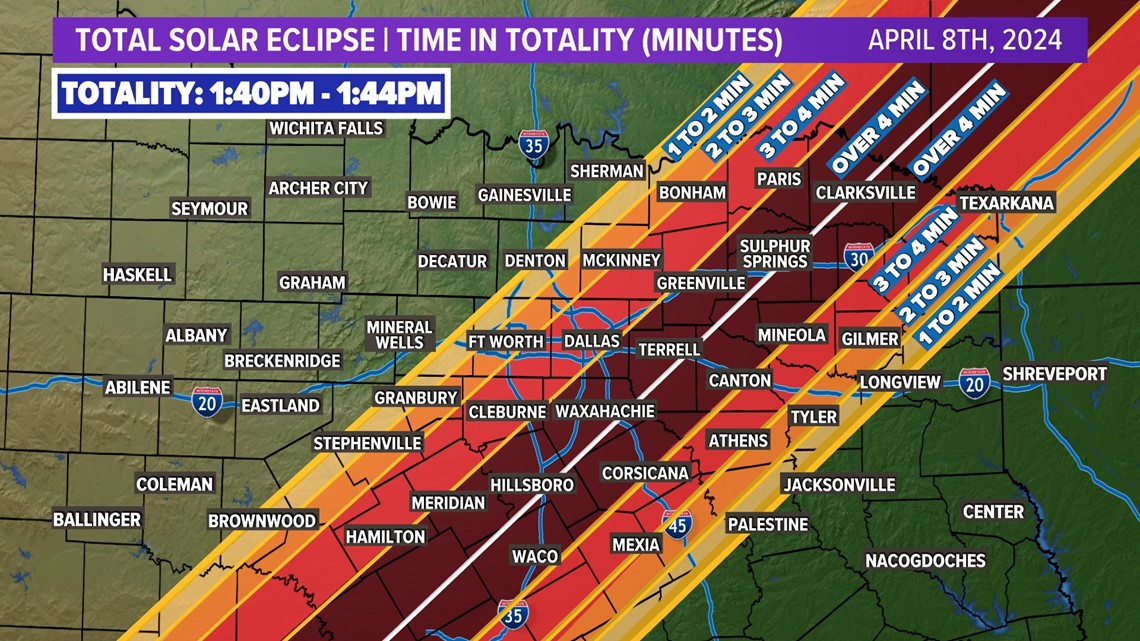DALLAS — North Texas will experience a total solar eclipse on Monday, and the celestial event will truly be a once-in-a-lifetime occurrence here.
North Texas hasn't experienced a total solar eclipse since 1878, and we won't experience another -- at least being in the path of totality -- until the year 2317.
So, take advantage of this chance while you can, unless you want to travel elsewhere to view eclipses in the more immediate future.
For Monday's event, much of North Texas will be in the totality path, at least for a short amount of time.
The partial eclipse will begin at 12:20 p.m. in North Texas.. Then, from 1:40 p.m. to 1:44 p.m. the eclipse will reach totality. After completing totality, the partial eclipse will remain in Dallas until 3 p.m.


When was the last solar eclipse in the US?
The last time the U.S. had a total solar eclipse from coast-to-coast was on Aug. 21, 2017.
More than 215 million U.S. adults viewed that celestial show, either in person or virtually, according to NASA.
Seven years ago, the path started in Oregon, stretched across the U.S. and exited through South Carolina. The path ranged from 62 to 71 miles wide, according to NASA.
The path of totality in 2024 will be twice as wide as the one in 2017 due to the moon's distance from earth during the eclipse.
When is the next solar eclipse after 2024?
North America won’t experience totality again until 2033, with Alaska getting sole dibs. Then that’s it until 2044, when totality will be confined to Western Canada, Montana and North Dakota.
There won’t be another U.S. eclipse spanning coast-to-coast until 2045. That one will stretch from Northern California all the way to Cape Canaveral, Florida.
How often does a solar eclipse occur?
Solar eclipses of all kinds happen more frequently than one might think.
NASA breaks down the math to about 2,380 solar eclipses of all kinds every 1,000 years — or roughly 2-3 solar eclipses each year. For total solar eclipses, where the moon completely covers the sun, it works out to two eclipses every three years.

